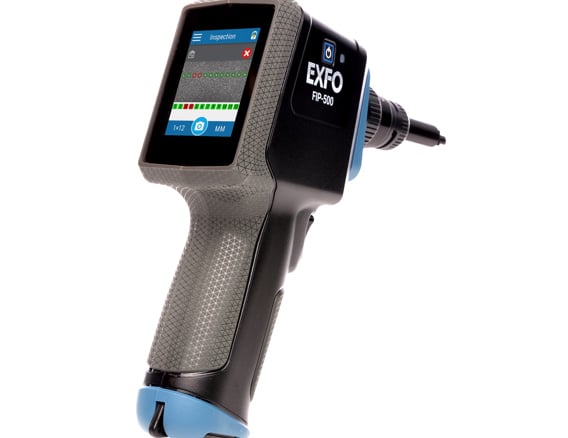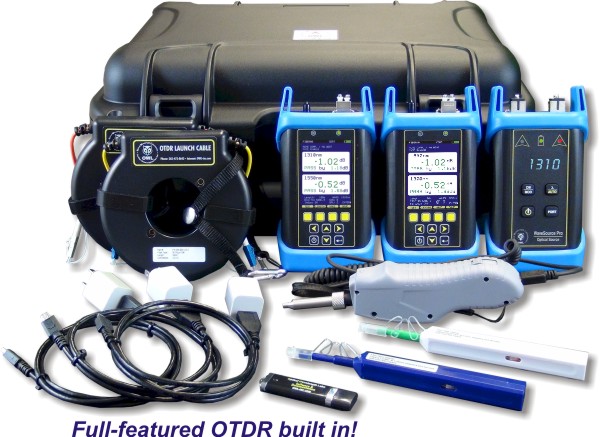How to select the right optical measurement system for your production needs
Checking out the Effect of Robotic Vision on Modern Manufacturing Techniques and Quality Assurance
Robotic vision technology is changing the landscape of modern production and high quality control. By incorporating innovative imaging systems and expert system, suppliers can achieve unprecedented degrees of accuracy and performance. This change not only optimizes production procedures however also addresses vital challenges in preserving product requirements. As industries significantly rely upon these advancements, the implications for future production techniques stay to be fully checked out. What will this imply for the affordable characteristics of the marketplace?
Comprehending Robotic Vision Innovation
Robotic vision technology offers as the backbone of automation in modern-day manufacturing. It incorporates the usage of video cameras, sensors, and fabricated knowledge to allow robotics to analyze and reply to visual details from their setting. This innovation allows robots to recognize, situate, and review objects, making them efficient in carrying out complex tasks such as setting up, assessment, and product handling with precision. The integration of maker learning formulas better enhances the capacity of robot vision systems, enabling them to adapt to differing problems and improve over time. By processing pictures and data in real-time, robot vision systems can promote quicker decision-making and decrease errors in making procedures (optical measurement system). This technology not only enhances operational effectiveness yet also guarantees that high quality standards are satisfied constantly. As the production landscape remains to progress, comprehending the intricacies of robotic vision modern technology ends up being vital for leveraging its possible fully
Benefits of Robotic Vision in Manufacturing
Robotic vision innovation offers considerable benefits in production by enhancing precision and precision in jobs such as top quality control and assembly. This increased degree of information warranties that items fulfill strict requirements, lowering waste and revamp. Additionally, the integration of robot vision can lead to enhanced production performance, allowing producers to maximize their procedures and achieve higher outcome rates.
Boosted Precision and Accuracy
In modern production, boosted precision and accuracy are vital for optimizing production procedures and making sure item quality. Robotic vision systems enable makers to do complex jobs with remarkable consistency. These systems use advanced imaging innovations to identify minute details and variations in products, elements, and completed products. By examining visual information in real-time, robot vision significantly minimizes human mistake, bring about fewer flaws and greater quality standards. Furthermore, improved accuracy in dimensions and positioning facilitates better placement in setting up processes, which is important for detailed layouts. Ultimately, the combination of robotic vision not only reinforces the reliability of producing outputs but likewise fosters self-confidence amongst customers concerning item integrity and efficiency. This accuracy is essential in industries where quality is paramount.
Raised Production Efficiency

Manufacturers are progressively transforming to vision systems to enhance manufacturing effectiveness across numerous processes. These sophisticated systems make it possible for real-time inspection and tracking, substantially lowering downtime triggered by errors or flaws. By integrating robot vision, firms can automate quality control, enabling faster recognition of concerns and decreasing the demand for human treatment. This leads to structured operations, as robotics can promptly adjust to changes in production needs without compromising accuracy. Vision systems facilitate far better supply management by precisely tracking elements and items, making certain ideal resource utilization. Inevitably, the fostering of robot vision not only improves performance but additionally contributes to higher result prices, lowered operational costs, and boosted general productivity in the manufacturing industry.
Enhancing Quality Control Processes
Robotic vision innovation considerably boosts high quality control processes in production by utilizing accuracy examination strategies. These innovative systems assist in real-time defect discovery, making certain that items meet rigid high quality criteria. As an outcome, producers can reduce waste and boost general efficiency.
Accuracy Evaluation Techniques
Precision examination methods have revolutionized quality assurance processes in manufacturing, allowing the discovery of minute issues that conventional methods may neglect. These methods leverage progressed imaging modern technologies, such as high-resolution cameras and laser scanning, to attain unequaled accuracy. By making use of robot vision systems, makers can automate evaluation tasks, guaranteeing constant efficiency and decreasing human mistake. The assimilation of device learning formulas furthermore enhances these systems, enabling them to adapt and enhance in time. In enhancement, precision inspection assists in the identification of subtle variants in item dimensions and surface area finishes, which can significantly impact overall item high quality. Consequently, suppliers can execute corrective actions a lot more promptly, ultimately causing minimized waste and enhanced consumer fulfillment.
Real-Time Defect Detection
Taking advantage of sophisticated imaging modern technologies, real-time flaw discovery changes quality assurance procedures in manufacturing. By incorporating high-resolution video cameras and sophisticated algorithms, makers can promptly recognize anomalies during manufacturing. This innovation helps with instant restorative actions, lowering waste and boosting total efficiency. Real-time systems assess items as they relocate along the production line, guaranteeing that defects are spotted and addressed immediately manufacturing routines. Furthermore, the execution of artificial intelligence boosts the accuracy of these systems, enabling them to adjust to new issue patterns in time. Makers benefit from enhanced product high quality and reduced operational expenses. Inevitably, real-time defect discovery not just simplifies procedures yet likewise fosters a culture of constant enhancement in contemporary manufacturing atmospheres.
Real-Time Data Analysis and Decision Making
In the dynamic landscape of production, real-time information analysis encourages systems to make swift, informed decisions. By leveraging sophisticated robotic vision technologies, suppliers can gather and process huge quantities of data instantaneously. These systems assess visual inputs to keep track of manufacturing processes, making certain that any kind of inconsistencies from quality requirements are detected and attended to promptly. Subsequently, manufacturers can maximize procedures by reallocating resources and changing process based upon real-time insights.
In addition, the combination of data analytics permits predictive upkeep, where possible tools failings are anticipated before they interrupt manufacturing. This positive method decreases downtime and enhances overall efficiency. optical fibre diameter analyser. The ability to make data-driven choices in actual time considerably decreases waste and improves product high quality, permitting makers to respond to market needs swiftly. As an outcome, real-time data analysis not just enhances manufacturing but likewise cultivates a society of continuous renovation in modern manufacturing atmospheres
Obstacles in Implementing Robotic Vision Equipments
Carrying out robot vision systems in producing offers a series of obstacles that can prevent their performance. One substantial obstacle is the intricacy of integrating these systems with existing machinery and workflows. Suppliers commonly face compatibility issues with tradition tools, bring about boosted expenses and downtime. In addition, the variability in product shapes, sizes, and products can make complex the calibration of vision systems, requiring comprehensive training and fine-tuning.
An additional obstacle hinges on processing big quantities of aesthetic data in genuine time. High-performance computer sources are necessary, which may need additional investment in facilities. Furthermore, there is a scarcity of competent workers efficient in handling and preserving these sophisticated systems, leading to prospective operational inefficiencies. Guaranteeing the reliability and accuracy of robot vision systems under differing environmental conditions presents a continual difficulty. Dealing with these problems is essential for taking full advantage of the possible benefits of robot vision in production.
Future Trends in Robotic Vision for Production
As developments in expert system and maker knowing proceed to advance, the future of robot vision in production appears increasingly promising. Emerging trends suggest a shift towards extra sophisticated imaging technologies, such as 3D vision systems and hyperspectral imaging, which will certainly boost precision in top quality control processes. Combination with the Web of Points (IoT) will enable real-time data analysis, allowing robot systems to adapt promptly to modifications in the production atmosphere. The growth of collaborative robots (cobots) geared up with innovative vision capacities is expected to help with seamless human-robot interactions, improving efficiency and safety on the factory floor. Additionally, the consolidation of side computer will certainly equip robot vision systems to refine data in your area, reducing latency and allowing faster decision-making. These advancements will certainly not only streamline making procedures however additionally considerably optical measurement system enhance item high quality, positioning robotic vision as a foundation of future industrial procedures.
Frequently Asked Concerns
Just How Much Does Robotic Vision Technology Typically Price?
Robotic vision technology commonly costs in between $10,000 and $100,000, depending on the intricacy and specs. Factors influencing price consist of sensing unit top quality, software program capacities, and assimilation demands, making it vital to assess certain task demands.
What Industries Are A Lot Of Affected by Robotic Vision Advancements?
Robotic vision advancements greatly effect industries such as manufacturing, automobile, electronic devices, and food processing - robotic vision. These markets benefit from enhanced automation, improved quality assurance, and raised effectiveness, causing structured procedures and lowered labor prices
Can Robotic Vision Solutions Be Integrated With Existing Machinery?
Robotic vision systems can undoubtedly be incorporated with existing equipment. This assimilation enhances operational performance, allowing makers to leverage advanced innovations without the requirement for complete overhauls, consequently enhancing manufacturing processes and preserving high quality requirements.

What Skills Are Called For to Operate Robotic Vision Systems?
Running robotic vision systems demands proficiency in programming, an understanding of maker learning, understanding of image processing techniques, and the ability to fix equipment and software concerns, making certain seamless integration and ideal efficiency within manufacturing settings.
Are There Any Safety Interest In Robotic Vision in Production?
